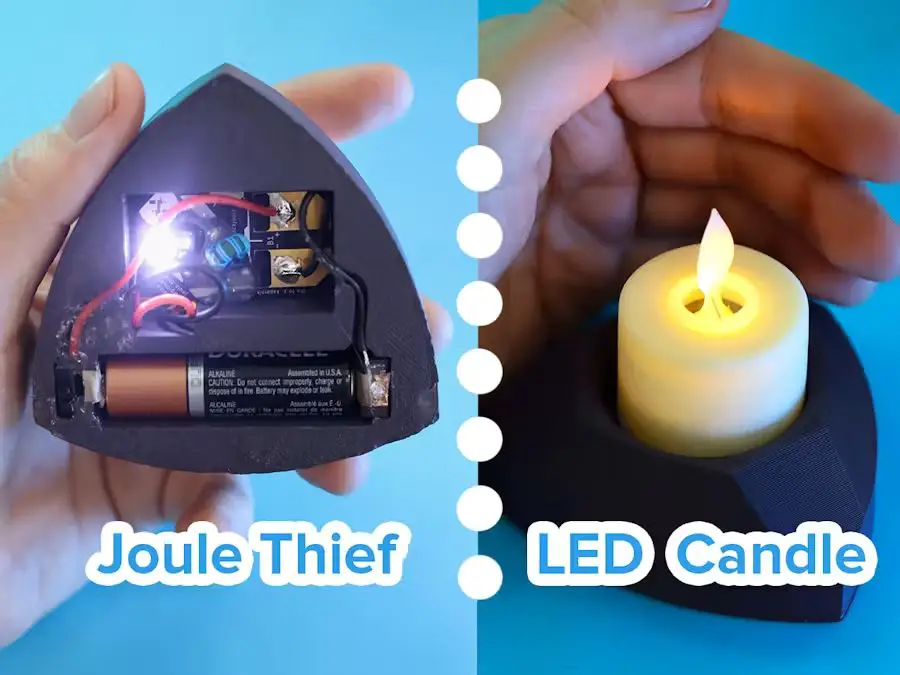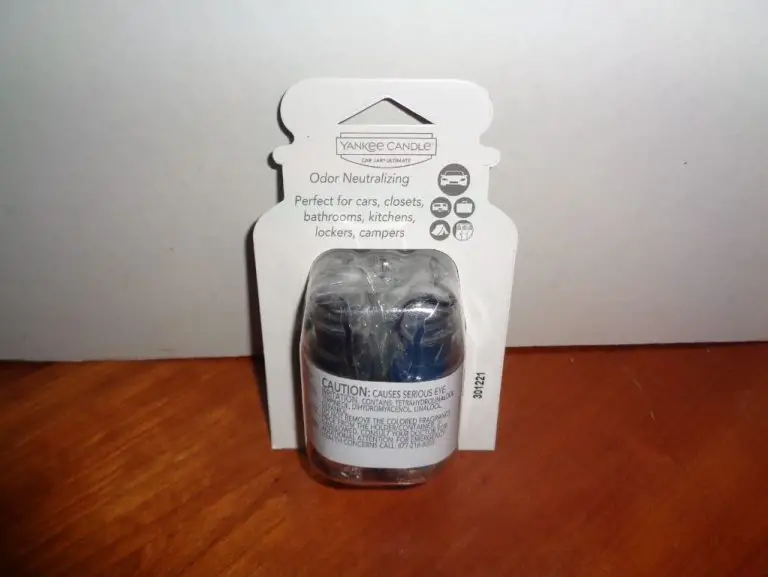How Long Do Battery Tea Light Candles Last?
What Are Battery-Operated Tea Lights?
Battery-operated tea lights are small electric lights designed to mimic the flickering glow of a real wax tea light candle, without the need for an open flame. They consist of an LED light powered by a small battery encased in a plastic holder styled like a traditional tea light candle holder.
Battery-operated tea lights provide ambient lighting and a candle-like ambiance, making them popular for use in centerpieces, seasonal décor, mood lighting, dining settings, and more. They offer a safe and convenient alternative to real candles for anyone looking to create a soft, warm lighting effect without the hassle of managing lit flames.
Tea Light Construction
Tea lights are a type of small candle typically used in candle holders. Battery-operated tea lights replace the wax candle with an LED light powered by a small battery.
The main housing of a battery tea light is usually made of plastic. This plastic casing contains the battery, a small circuit board, and the LED light. The LED is positioned to shine up through a tiny plastic or glass “flame” piece at the top of the tea light. This plastic flame diffuses the LED light to look like a real flickering candle flame.
Under the plastic flame, there is often a small metal platform to hold the circuit board and battery. The battery connects to the circuit board, which contains the LED light and electronics to make the LED flicker like a real candle. The battery provides power to light the LED.
The entire assembly fits neatly into the plastic tea light housing, with a removable bottom to allow batteries to be replaced when they run out.
Battery Types
Battery-operated tea lights use miniature disc button cell batteries to power the small incandescent bulb inside. There are several common types of button cell batteries used:
Zinc-Air Batteries: These have a voltage of 1.4-1.5V and come in sizes like AG10 or LR54. Zinc-air batteries offer good capacity for their small size, but have a shorter shelf life once activated.
Alkaline Batteries: Common alkaline button cells like LR44 or LR41 provide 1.5V of power. Alkaline batteries retain capacity well after activation and have a longer shelf life than zinc-air.

Lithium Batteries: Lithium coin batteries like CR2032 offer 3V and the highest energy density. However, they are more costly than zinc-air or alkaline options.
So in summary, tiny batteries like LR44 alkaline or LR54 zinc-air tend to be used most often in tea lights, with lithium CR2032 as a high-capacity option. The voltage, shelf life and cost differences make certain batteries preferable.
Factors That Impact Battery Life
When trying to determine how long a battery-operated tea light will last, it helps to understand the different factors that impact battery life. There are three main factors:
Battery Quality and Capacity
Higher quality batteries with greater milliamp hour (mAh) ratings will last longer than cheaper batteries with lower mAh ratings. Many battery tea lights run on button cell batteries ranging from 50 mAh to 300 mAh capacity. Higher capacity batteries can provide up to 6 hours of continuous burn time while lower capacity batteries may only last 1-2 hours.
Light Usage Patterns
Burn time is impacted by usage patterns. If the tea light is turned on continuously it will drain the battery faster than occasional use. For example, using the tea light in short 1-2 hour intervals with breaks in between will extend battery life compared to leaving it on all day.
Temperature
Colder temperatures can reduce battery performance and shorten burn times. This is especially noticeable with lower quality batteries. Higher capacity batteries from reputable brands are less affected but all batteries will see reduced life in very cold conditions.
Average Burn Times
The burn time for battery-operated tea lights can vary greatly depending on the battery type and brand. Here are some approximate average burn times:
Alkaline Batteries
Alkaline batteries tend to provide the longest burn times for tea lights. Most tea lights with alkaline batteries will burn for 5-10 hours continuously before the battery runs out. High-end brands may last up to 15 hours.
Lithium Batteries
Lithium batteries offer brighter light but shorter burn times than alkaline. Expect lithium battery tea lights to burn continuously for 3-6 hours on average.
Zinc Carbon Batteries
Standard zinc carbon batteries don’t last nearly as long as alkaline or lithium in tea lights. The average burn time is 1-3 hours before the battery is drained.
In general, more expensive name brand tea lights made with quality components and batteries will burn longer than generic cheap models. But there can be significant variability even between brands using the same battery type. Checking reviews can help determine relative longevity between different tea light models.
Getting the Longest Burn Time
There are a few things you can do to extend the life of your battery tea lights and get the most burn time per set of batteries:
Choose high capacity batteries – Opt for batteries with the highest mAh (milliampere-hour) rating you can find. The higher the mAh, the more power the battery can hold, which translates to longer burn times.
Minimize on/off cycles – Every time you turn your tea lights on and off, it uses up some battery life. Reduce the frequency of switching them on/off to conserve power.
Store properly when not in use – Make sure to remove batteries from the tea lights during long periods of non-use. Store batteries properly to avoid drainage; cool, dry places away from metal objects work best.
With high-capacity cells and proper care, you can maximize the lifespan of your batteries and enjoy the longest burn times from your battery-operated tea lights.
Signs the Battery is Dying
One of the first signs that a battery-operated tea light is running out of power is a dimming light. As the battery starts to drain, it provides less energy to the small LED bulb inside the tea light. This causes the bulb to emit less light, resulting in a dimmer glow from the tea light.
Another telltale sign of a dying battery is flickering. When a tea light’s battery can no longer provide consistent power to the LED bulb, the light will start flickering instead of glowing steadily. The flickering may be occasional at first but increase in frequency as the battery runs lower on power. Eventually, the battery will be depleted enough that the tea light will turn off completely.
Flickering and dimming provide a good indication that the battery needs to be replaced soon in a battery-operated tea light. Catching these signs early can allow you to replace the battery before the candle fully turns off.
Safety Tips
Safety should always be the top priority when using battery-operated tea lights or any open flame. Here are some key tips to remember:
Don’t Leave Burning Unattended: Never leave a lit tea light unattended. Always extinguish tea lights before leaving a room or going to sleep. Unattended tea lights can easily be knocked over by children or pets, resulting in a fire hazard.
Change Batteries Regularly: Old or drained batteries are prone to leaks or explosions that could start a fire. Replace batteries in your tea lights every 30-60 days, even if the candle still seems to be burning. Don’t mix old and new batteries.
Proper Disposal: Battery tea light candles contain electronics, so they should not be thrown in the regular trash. Dispose of expired tea light candles responsibly by taking them to a battery recycling center or hazardous waste collection event.
By following these basic safety precautions, you can enjoy the ambiance of flickering candlelight safely.
Cost Comparison: Battery vs. Wax Tea Lights
When looking at the costs of battery-operated tea lights versus traditional wax tea lights, battery lights tend to be more expensive upfront but cheaper over time. Here’s a cost breakdown:
Wax tea lights are very inexpensive, usually $1-2 for a pack of 10-12 tea lights. However, they only burn for 3-6 hours each. So if you use them daily, you’ll go through a pack every 1-2 weeks. Over the course of a year, you may use 100-200 tea lights at a cost of $10-20 per year.
Battery-operated tea lights range from $1-5 each, with multi-packs available for bulk discounts. The batteries tend to last 30-150 hours. If we estimate an average battery life of 100 hours, a single $3 battery tea light would last over 3 months with daily use. So you may only need 4 battery tea lights per year at a cost of $12.
Looking at those numbers, battery-operated tea lights have a higher upfront cost, but can save money in the long run by avoiding the continuous repurchase of wax tea lights. For frequent, everyday use, battery lights are usually the cheaper and more convenient option over time.
Environmental Impact
Battery-powered tea lights contain various materials and electronics that require proper disposal. The plastic housing and metal contacts should be recycled whenever possible. Recycling centers may require batteries to be removed beforehand.
Batteries themselves can be tricky to recycle. Small single-use batteries like those in tea lights often cannot be accepted by regular recycling programs. They may need to go to hazardous waste collection depending on the battery chemistry. Alkaline batteries are generally safe to throw away, while lithium batteries require special handling. Check with your local recycling center to understand battery recycling options in your area.
To minimize waste, use rechargeable batteries in tea lights whenever possible. Rechargeable batteries have a higher upfront cost but pay off in the long run environmentally and financially. There are even some solar-powered tea lights available. Disposing of tea lights and batteries properly reduces their environmental impact and protects the health of our communities.


